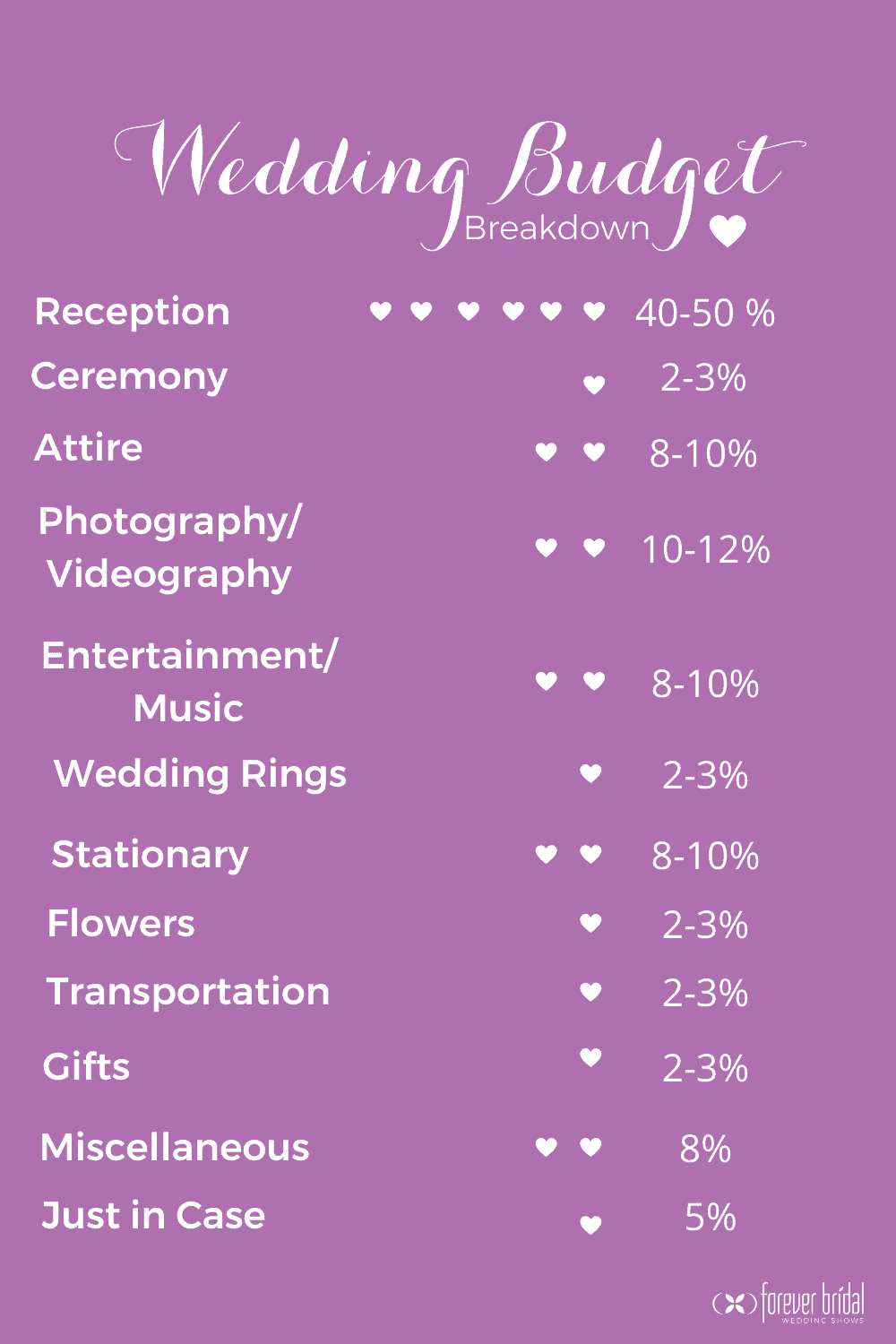
Determining and allocating a budget for your wedding can be pretty stressful and let’s face it, most likely expensive — but it is one of THE most important tasks you just can’t skip when it comes to planning your big day. Coming up with a solid budget will influence everything from the venue, guest list, meals, entertainment and much more. Unsure how to begin allocating your wedding budget? We’ve got you — whether your budget is $1,000 0r $100,000.
It’s all in the details
When it comes down to it, the cost of your wedding is truly all in the details and will depend on you, your taste, and where you choose to have your wedding. You’ll also want to take into account the size of your guest list, the date/time, and the wedding style you desire.
If you plan to have a upscale, designer dinner in a fancy hotel downtown, your budget is going to have to be a lot bigger than if you’re planning on saying “I do” at your uncle’s farmhouse. There are several factors that will dictate how much you ultimately need to set aside to be prepared. You can also hire a financial planner to help you go over the nitty gritty deets.

Wedding budget breakdown
When it comes to crunching the numbers and planning ahead, keep in mind you’ll need to allot funds for your reception, ceremony, attire, flowers, music/entertainment, videography/photography, stationary (thank you’s and wedding invitations, etc.), wedding rings, parking and transportation, gifts, and miscellaneous costs (unexpected costs that will inevitably pop up along the way). It may be wise to put aside a “just in case” fund as well, to ease any worries you might have about expenses.
- Reception: 48-50 percent.
- Ceremony: 2-3 percent.
- Attire: 8-10 percent.
- Photography/Videography: 10-12 percent.
- Gifts: 2-3 percent.
- Entertainment/Music: 8-10 percent.
- Stationary: 2-3 percent.
- Flowers: 8-10 percent.
- Wedding Rings: 2-3 percent.
- Miscellaneous: 8 percent.
- Parking and Transportation: 2-3 percent.
- Just in Case: 5 percent.

Source: the knot.com
Small ways to save
You might be in full-on panic mode, trying to figure out how to possibly afford a wedding…but don’t worry, you totally have this under control.
Once you are engaged, it’s time to start putting some money in the piggy bank, hypothetically speaking. In reality, you should be saving a portion of every paycheck and putting it toward your wedding. A good goal to aim for, would be to save 15-20 percent of your monthly income. Remember, the longer your engagement is, the longer you will have to allocate funds towards it.
Think of small ways to save. Do you really need Fabletics right now? Can you skip the Starbucks today? Are you using your that subscription box still? Cancel memberships/subscriptions you are no longer using, and skip the latte. It’ll add up, we promise!
Cutting costs
When it comes to the wedding itself, there are ways to cut costs. You can pare down your guest list, consider stationary costs, simplify wedding photography/videography and skip the special effects, utilize less expensive flowers, make your menu a little simpler, don’t get too extra with your wedding cake, and resell/reuse your wedding attire.
Track your spending
Once you’ve set a budget, it’s important to keep track of all the ways you are spending and also how you are allocating your wedding funds. Be sure to put a system in place that ensures you are keeping track of money coming in and out of the wedding budget. Spreadsheets are a fantastic way to do this. Just to be sure to record payments and what is owed along the way.
